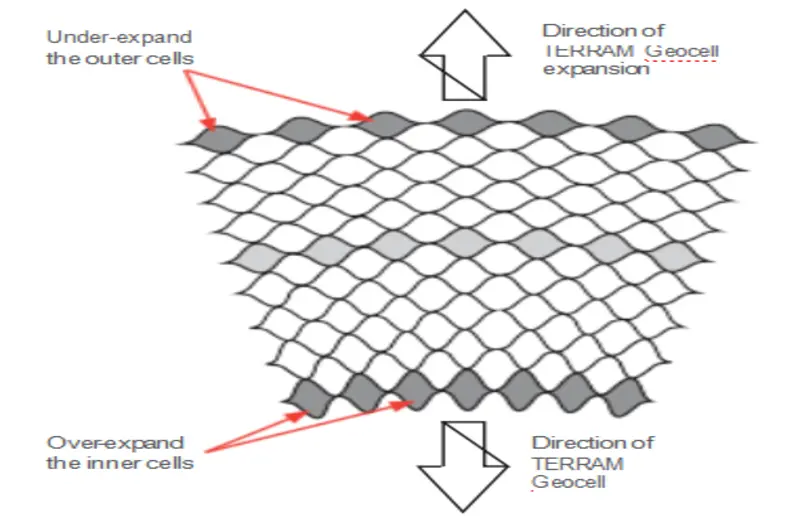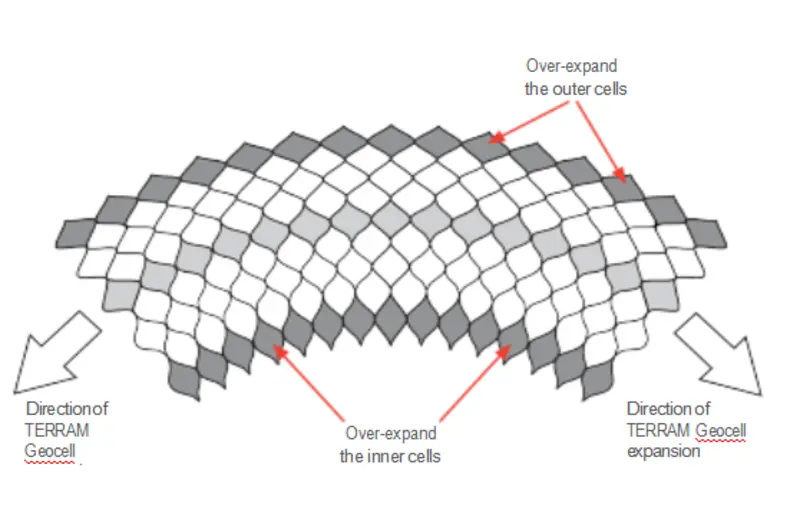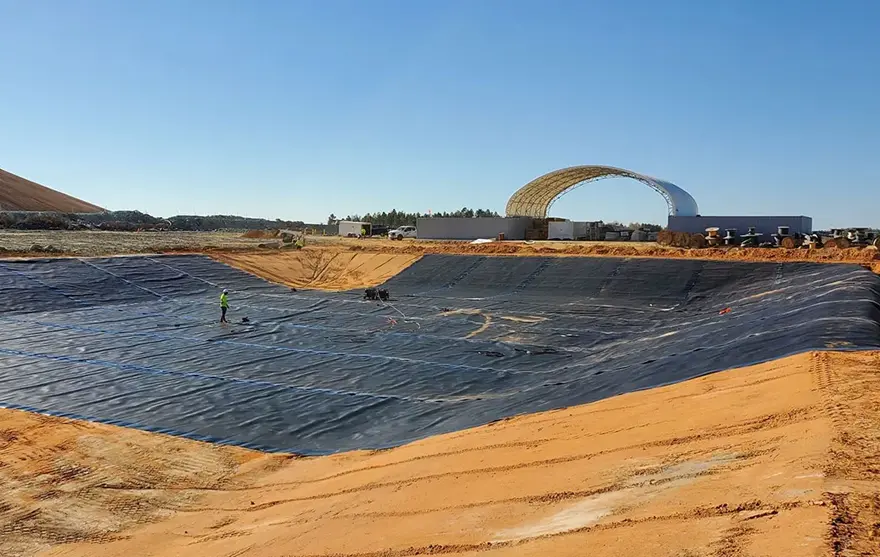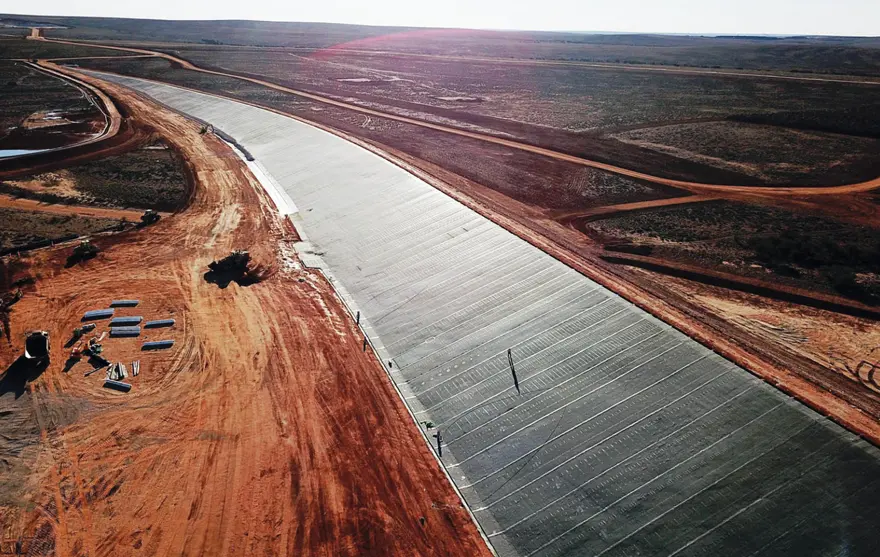
1.Ensure that the working area is free from buried services, all existing vegetation has been removed and the slope shaped to achieve a generally even gradient. If required anchor trenches to be excavated at the toe and crest of the slope generally 500mm wide x 500mm deep and set back 1000mm from the crest.
2. If a separation geotextile or a protection geotextile below the Geocell is required (for non-vegetated slopes), install down the slope securing within the crest and toe anchor trenches, overlapping adjacent rolls by a minimum of 150mm. Hold the geotextile temporarily in place using pins or sandbags until the overlying DK Geocell layer is installed and the anchor trenches backfilled.
3. Partially open out the Geocell panel and initially pin in place using steel u-bars (or other approved fixings) along the crest of the slope within the anchor trench. Fully expand the Geocell panel down the slope manually pulling into tension so that the cells are fully open but without undue stress. Pin or infill several cells around the perimeter to hold the cells in an open and fully expanded position. Prior to filling fix every cell around the perimeter and generally on an orthogonal grid at 1m centres down and across the slope. Spacing of the Geocell fixings will be determined by the scheme designer and is dependant on the slope gradient, cell size, soil infill depth and the sub grade soil parameters. Please contact DK for further guidance on fixings and the appropriate grade of geocell.
4. DK Geocell panels are very flexible and easily be installed around obstacles such as trees or structures. DK Geocell panels can easily be cut to suit using a sharp knife/scissors or joined together by heavy duty galvanised staples installed with a pneumatic heavy duty stapling plier or UV stabilised nylon cable ties.Changes in gradient and curves can easily be accommodated by either allowing some variations in cell shapes and sizes (over or under expanding the cells) or cutting an entire panel at an angle and then stapling to form a taper or L-shape.
Installation of Geocell on Curved or irregular sufaces


Field cutting of DK Geocell to form tapers and “L”-shapes

5.Once the Geocell panels has been fixed and anchored in place, in-filling of the cells may be carried out. The infill material should be well graded and a good quality friable topsoil where a vegetated finish is required. The infill material should be carefully placed within the cells in a uniform manner ensuring there are no localised areas which are overloaded. Placement may be by mechanical or manual means preferably commencing at the crest (top) of the slope and progressing downwards. The final depth and compaction of the fill material should be controlled manually, using hand tools, to ensure the Geocells are fully filled and covered by a uniform layer of overburden (typically 20mm deep).







